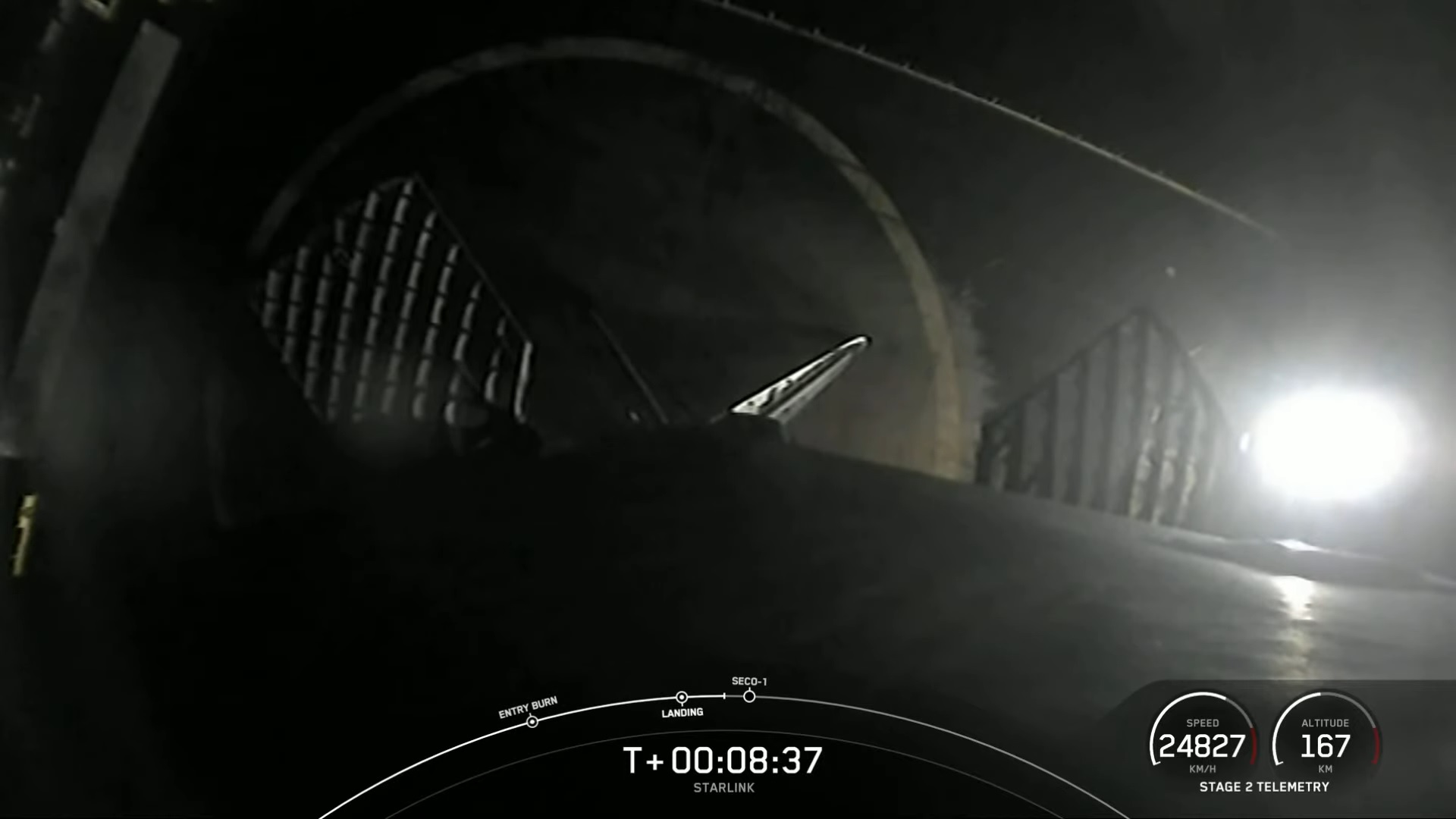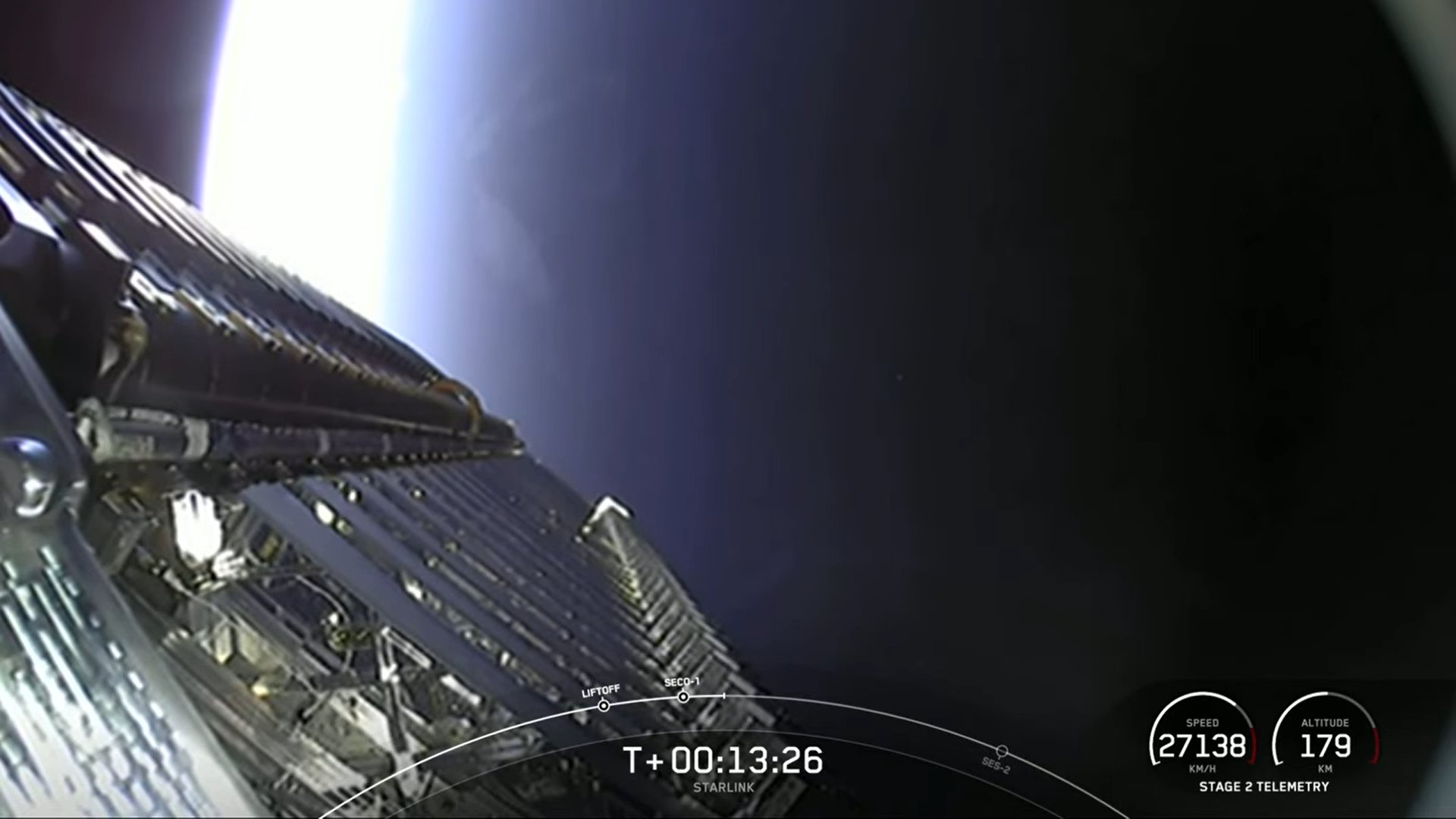60 new Starlink internet satellites launched by SpaceX!
There are now more than 1,300 Starlink satellites in orbit.
CAPE CANAVERAL, Fla. — A SpaceX Falcon 9 rocket launched a new batch of 60 Starlink internet satellites into orbit early Wednesday (March 24) and nailed a landing at sea to top off the company’s latest successful mission.
The veteran Falcon 9 rocket blasted off from Space Launch Complex 40 here at Cape Canaveral Space Force Station in Florida at 4:28 a.m. EDT (0828 GMT).
Approximately nine minutes later, the reusable rocket’s first stage returned to Earth for its sixth successful landing. SpaceX’s drone ship “Of Course I Still Love You” was stationed out in the Atlantic Ocean, standing by for the catch.
Today’s flight is the fourth Starlink mission this month for the Hawthorne, California-based rocket builder. SpaceX is inching closer to filling its initial internet constellation, which is planned to be 1,440 strong. Eventually that constellation could be tens of thousands of satellites strong as SpaceX has permission to launch as many as 30,000, with an option for even more.

It was a slightly cloudy morning in Florida as the Falcon’s flames lit up the night sky. Weather forecasters at the 45th Weather Squadron predicted ideal conditions for launch, with the only weather concerns being the potential for cumulus clouds.
“This is the sixth landing for this booster and the 78th landing overall,” Andy Tran, a production supervisor at SpaceX, said on the launch webcast. “What a way to start the day.”
The launch occurred on the 15th anniversary of SpaceX’s first-ever launch, an unsuccessful flight of its first Falcon 1 rocket, Tran said.
“With more than 100 successful flights of Falcon 9 and 78 recoveries of our first stage to date, we’ve made a lot of progress since then,” he added.
The booster for today’s launch, called B1060, is one of six Falcon 9 boosters in SpaceX’s fleet of flight-proven rockets. The veteran flier now has six flights under its belt, including four different Starlink missions. In addition, the booster also lofted an upgraded GPS III satellite for the U.S. military in June 2020, and a communications satellite for Turkey in January of this year.
In fact, this was the first rocket that the U.S. military allowed SpaceX to recover, a switch from its previous military launches where the company would discard the booster after it delivered its payload. NASA recently followed suit, permitting SpaceX to reuse its rockets on crew missions. The upcoming Crew-2 mission, set to launch no earlier than April 22, will be the first crewed flight to fly on a refurbished rocket. (That mission will also feature a reused Crew Dragon spacecraft.)
Wednesday’s launch marks the ninth flight overall for SpaceX in 2021, and the third flight this year for this particular booster. Its last flight took off on Feb. 4, and engineers spent just under 50 days getting it prepped and ready to fly again.

Having a fleet of flight-proven rockets at its disposal, allows SpaceX to keep up with its rapid launch cadence. However company officials have stressed that while booster recovery is a bonus, the main objective is to deliver whatever payload the rocket is carrying to space.
This is the 112th overall flight for Falcon 9, and the 58th reflight of a booster. In fact every single launch so far in 2021 for SpaceX has been on a flight-proven rocket. It also marks the fourth successful landing in a row for SpaceX, after the company lost one of its six-time fliers on Feb. 15 when the rocket lost an engine during flight and subsequently failed to land on the drone ship.
SpaceX has since attributed the anomaly to a worn out engine cover that allowed hot gases to seep into places they weren’t supposed to. This caused one of Falcon 9’s engines to shut down during flight. The rocket is designed to be able to complete its mission even if it loses an engine, but it was unable to slow itself enough to touchdown on the drone ship, and instead landed in the ocean.
An upgraded version of Falcon 9 debuted in 2018, and the company boasted that it expected each Falcon 9 first stage could fly an estimated 10 times with little-to-no refurbishments in between, and as many as 100 times before retirement.
One of SpaceX’s other boosters is very close to achieving that milestone as it hit its ninth launch and landing last week. B1051, is the fleet’s leader and could blast off on its historic flight in the near future.



